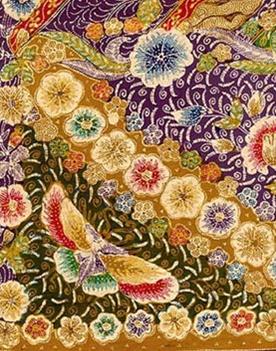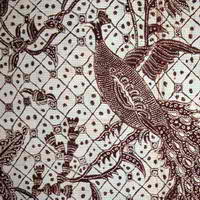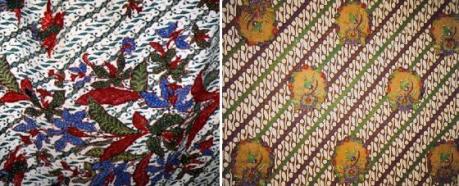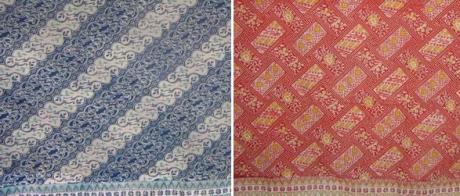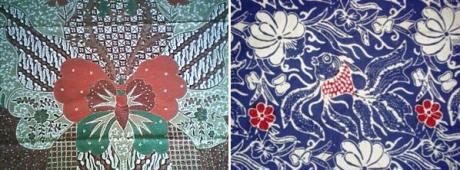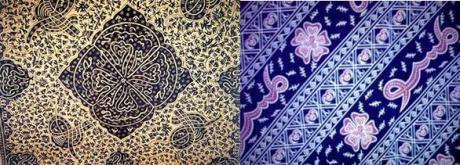Various Motifs of Batik August 19, 2010
Posted by chika-chika kelap-kelip in Entertainment.Tags: batik Indonesia, motif batik, various batik
1 comment so far
This is the second sequel of my posts about batik. So, let’s continue learning about motifs of batik.
The Other Motifs of Batik
Generally, batik can be classified into Batik Keraton Jawa and Batik Pesisir. (http://tutinonka.wordpress.com/2009/08/29/meniko-batik-mas-mbakyu/)
Solo (Surakarta) and Yogyakarta batik are the Batik Keraton Jawa, but both have differences.
Yogya batik has white background color with dark brown pattern. And Solo batik is dominant with yellowish brown color. These motif characters are related to the different political attitudes of Keraton Yogyakarta and Solo. Keraton Yogya is anti-colonial, while Keraton Solo is pro-colonial.
Close relationship between Keraton Solo with the Netherlanders affected their batik motifs to be more flexible, more variable, and colorful. While Keraton Yogya, which against the Netherlanders, the batik motifs are firm, adhere to the pattern, and ‘uncompromising’.
“Pesisir” (Coastal) Batik has a character which very different from the Keraton Jawa batik. This Coastal community (Cirebon, Semarang, Pekalongan, Lasem, Kudus, Indramayu, Banyumas, Tuban, etc.) is a port city that many people interact with foreign nations. Batik from this region is heavily influenced by the sari cloth, which was brought by traders from India. The styles of Dutch and China women were also impact on batik motifs, which are flowers bouquet and colorful style. Cirebon and Semarang batik often display unique pictures of people, animals, boats, houses, and other forms like caricature.
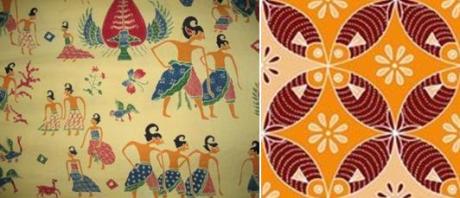
Semarang Batik. It generally has reddish orange base color with a more prominent motifs of fauna than flora.
Pekalongan batik is the most popular and colorful coastal batik, which is more influenced by Dutch and China immigrant descents than other coastal batik. Although the patterns are sometimes similar to Solo or Yogya batik, Pekalongan batik is heavily modified with the dynamic colors. The most popular batik motif from Pekalongan is Jlamprang motif. The uniqueness of Pekalongan batik is the makers always up to date with the times. For example, when the Japanese colonial era, they made batik named ‘Batik Jawa Hokokai’, which the patterns and colors were similar to the Japanese kimono. In 1960s, there was batik with name ‘Tritura’. Furthermore, after SBY has been elected as president in 2005, they also released batik with ‘SBY’ motif that similar to songket. (http://www.huzabatik.com/?load=batik_pekalongan)
Indramayu batik or Dermayon batik also belonging to the group of coastal batik. Therefore, many plant and animal images with the marine environment using tapered lines (ririan). The background color faded from the overall colors and the main patterns use dull colors. The composition of the motifs is very dynamic, asymmetric and rhythmically inclined.

Batik from Tuban (Gedog Tuban Batik), with ‘putihan’ color pattern (white base with dark blue or black decoration)
The motifs of Tulungagung batik are similar to Solo batik, but the colors are brighter.
Garut batik was influenced by Tasikmalaya, Ciamis, and Coastal batik, but it has more simple motifs. Generally, this batik use ivory and ‘sogan’ color base with dark blue, green, red, and purple for the patterns.
While Ciamis and Tasikmalaya batik were influenced by Banyumas and Keraton Jawa batik. The patterns modified from parang motif with reddish ‘sogan’ and black color on reddish light yellow background, called Sarian batik.
Madura Batik has uniqueness in colors and patterns, although the motifs is not as smooth as the Coastal or Keraton Jawa batik. Its colors give the impression of ‘exotic’.
Sidoarjo batik shows the influence of Madura. This batik characteristics are firm, clear, and, stained with a striking expression of black, brown, and red.
On the island of Sumatera, we found batik in South Sumatra which the character is almost similar to the Coastal batik, brightly colored. ‘Jumputan’ motif (tie motif) also found in Palembang. Some of Palembang batik are decorated with gold yellow prada. Pradas at Palembang batik are thick and raised above the fabric, unlike the Keraton Jawa batik which are thin and soaked into the fabric.
Batik is also found in other areas of Sumatera, such as Riau, Lampung, Jambi, Bengkulu, and Minangkabau.
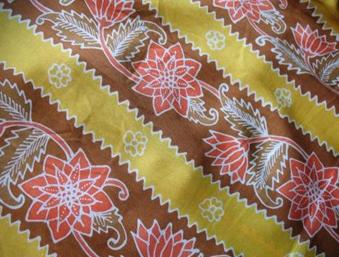
Batik from Riau, made by 'colet' method, with less “cecek” (small dots that fill a plane). The colors were bright, as colors of songket.
South Borneo also has batik, Sasirangan batik, which made by tie process (‘jumputan’). Cloth was tied up to follow certain motifs, and then soaked in dye. The parts were tied would leave a different color from the dye. Sasirangan batik generally has a pattern “Salur” or longitudinal stripes, but not significantly showing floral motifs as Riau batik.
Besides in areas I’ve mentioned, batik is also found in Bali and Papua.
Actually there is still a lot various of batik which I haven’t mentioned. If anyone knew of any other motif, you can share here.
You can see exactly that how rich the Indonesian cultures are, though it’s just from batik.
As Indonesian citizens, we have to preserve the cultural heritage of batik. And don’t forget to learn our other cultures and introduce more widely around the world.
To my friends around the world, thank you for reading this post, and hope you are curious to find the other unique cultures from Indonesia!
Regards
🙂
Taken from a lot of sources


